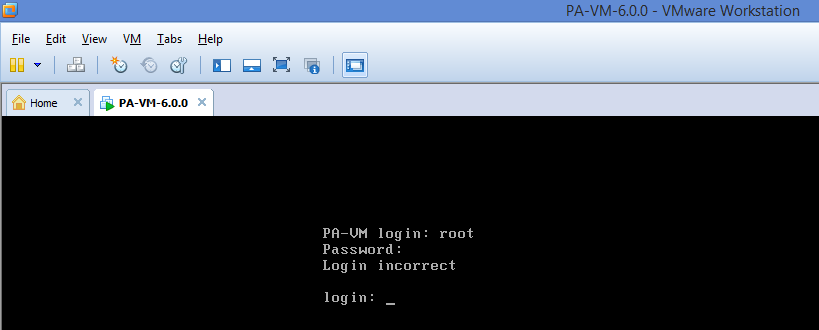
- #PALO ALTO OVA FOR VMWARE DRIVERS#
- #PALO ALTO OVA FOR VMWARE UPGRADE#
- #PALO ALTO OVA FOR VMWARE CODE#
- #PALO ALTO OVA FOR VMWARE PASSWORD#
NTP server for clock synchronization between the syslog collector and other apps and services.
#PALO ALTO OVA FOR VMWARE UPGRADE#
Server used to distribute broker upgrade package Pathfinder docker images required by package upgrades Pathfinder and analytics engine package upgrades PKI server used for certificate renewal and revocation
#PALO ALTO OVA FOR VMWARE PASSWORD#
PKI server used for passing a one-time password and receiving a certificate
Enable communication between the Broker Service and other Palo Alto Networks services and apps. VM compatible with VMware ESXi 6.0 or later. STEP 2 - Verify your environment meets the following requirements To further refine the administrative access available for your Cortex XDR users, Manage Roles from the hub. Assign user permissions. Ensure that you and any additional users are assigned appropriate administrative roles in the hub.  (Assets > Advanced Endpoint Protection).
(Assets > Advanced Endpoint Protection). #PALO ALTO OVA FOR VMWARE CODE#
Locate your Support Account auth code. Locate your auth code either in the confirmation email you received after you purchased Cortex XDR licenses or in the Customer Support Portal.All broker VMs associated with the same Support Account are visible in the Broker VMs screen.Once you pair a broker VM with a specific tenant, that broker VM can be managed only from that tenant.Each broker VM supports 10,000 Cortex XDR agents.
 You can set up several broker VMs for the same tenant. Provide a deep step-by-step configuration guide to setup a Cortex XDR Analytics Pathfinder Broker VM. Refer to the VMware documentation at Assign a Virtual Function as SR-IOV Passthrough Adapter to a Virtual Machine. You can add an SR-IOV VF interface to the VM using an SR-IOV passthrough adapter. Single root I/O virtualization (SR-IOV) allows a single PCIe physical device under a single root port to appear to be multiple separate physical devices to the hypervisor or guest.
You can set up several broker VMs for the same tenant. Provide a deep step-by-step configuration guide to setup a Cortex XDR Analytics Pathfinder Broker VM. Refer to the VMware documentation at Assign a Virtual Function as SR-IOV Passthrough Adapter to a Virtual Machine. You can add an SR-IOV VF interface to the VM using an SR-IOV passthrough adapter. Single root I/O virtualization (SR-IOV) allows a single PCIe physical device under a single root port to appear to be multiple separate physical devices to the hypervisor or guest. #PALO ALTO OVA FOR VMWARE DRIVERS#
Instead, interactions with the NIC are performed using drivers and the DPDK libraries. DPDK allows the host to process packets faster by bypassing the Linux kernel. See Performance Tuning of the VM-Series for ESXi for more information.
To achieve the best performance out of the VM-Series firewall, you can make the following adjustments to the host before deploying the VM-Series firewall. For more information about DPDK, see Enable DPDK on ESXi. 
Data Plane Development Kit (DPDK) is enabled by default on VM-Series firewalls on ESXi. This is because vSphere does not forward frames to a virtual machine when the frame’s destination MAC address and the vNIC MAC address do not match. If neither promiscuous mode nor hypervisor-assigned MAC address is enabled, the firewall does not receive any traffic. Because this causes the MAC addresses on each interface to differ, you must enable promiscuous mode on the port group of the virtual switch to which the firewall’s dataplane interfaces are attached this allows the firewall to receive frames (see Provision the VM-Series Firewall on an ESXi Server ). If you disable hypervisor assigned MAC addresses, the VM-Series firewall assigns each interface a MAC address from its own pool. vSphere assigns a unique vNIC MAC address to each dataplane interface of the VM-Series firewall. Hypervisor-assigned MAC address are enabled by default. For additional interfaces, use VLAN Guest Tagging (VGT) on the ESXi server or configure subinterfaces on the firewall. You can then add up to eight more vNICs for data traffic. One is a dedicated vNIC for the management interface and one is for the data interface. Minimum of two network interfaces (vNICs). See VM-Series System Requirements for the minimum hardware requirements for your VM-Series model.







 0 kommentar(er)
0 kommentar(er)
